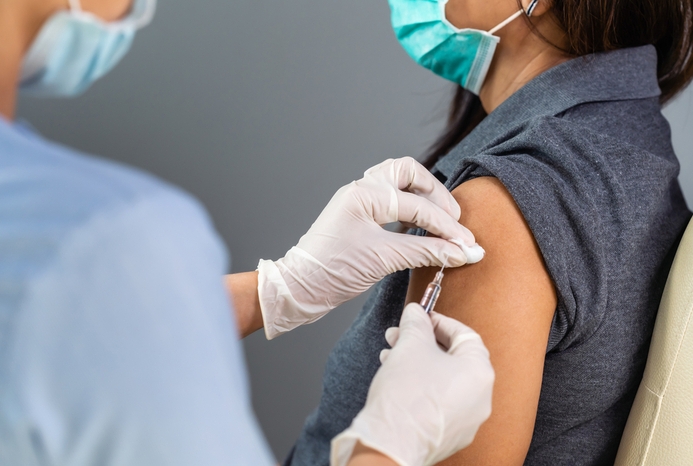A model for optimizing the dispensing of vaccines during pandemics that uses a new measure of success for such efforts has been developed by researchers at Weill Cornell Medicine, the Ithaca campus of Cornell University, Singapore University of Technology and Design and San Jose State University in California. The new model expands the concept of vaccine coverage to include 'vaccinated person-days' (VPDs), which prioritizes both the number of people vaccinated and the speed of getting shots into arms.
The primary goal of distributing vaccines in response to a pandemic is to protect the most people as quickly as possible. Shorter timeframes mean fewer infections, hospitalizations, deaths, and opportunities for new strains to emerge compared with longer timeframes. During the COVID-19 pandemic, manufacturers produced the first two vaccine doses in record time—within 300 to 400 days of U.S. Food and Drug Administration approvals. Vaccines were distributed widely with great emphasis on pharmacies and other small venues with the objective of making them easy to access.
However, in their paper, published May 23 in the International Journal of Production Economics, the researchers found this distribution method was neither efficient nor effective. “We were surprised to learn this distribution strategy led to extended times from production to people’s arms,” said senior author Dr. Nathaniel Hupert, associate professor of population health sciences and of medicine at Weill Cornell Medicine and an internal medicine physician at New York-Presbyterian/Weill Cornell Medical Center. “So, although the percentage of the population vaccinated – or coverage-- is an important metric reported by public health authorities, our work emphasizes that the timing of that coverage in relation to the unfolding outbreak is also critical.”
The research team included lead author Prof. John Muckstadt, the Acheson-Laibe Emeritus Professor of Engineering in the School of Operations Research and Information Engineering and Stephen H. Weiss Presidential Fellow at Cornell University, who with Dr. Hupert is co-director of the Cornell Institute for Disease and Disaster Preparedness (CIDDP); Dr. Robert Gougelet, an affiliate of the CIDDP at Weill Cornell Medicine, Prof. Michael Klein of San Jose State University, and Prof. Peter Jackson of the Singapore University of Technology and Design.
The investigators developed a computer model that incorporated supply chain logistics for distributing vaccines from manufacturers to regionalized distribution warehouses and finally to more localized dispensing centers. It included two different options for box sizes, the number and scale of dispensing locations and the number of vaccines administered daily. Using Centers for Disease Control and Prevention data, they calculated how box size (number of doses per box) and the number and capacity of dispensing venues affected the goal of achieving maximum VPDs within larger population groups.
The model showed almost 20 percent more VPDs would have been achieved if shots had been delivered into arms within a week of availability in the community, using the maximized distribution strategy, rather than 81 days, as happened in real life.
Looking at data from New York State, the number of VPDs achieved with the government’s policy would have been 16 percent higher if the proposed optimized distribution strategy had been employed. These inefficiencies in distribution translated to a loss of over 50 days of protection for the average vaccinated person in New York state, which is close to one-third of the duration of the omicron variant surge. The model also showed that a smaller box size, an often-overlooked factor, was associated with higher VPDs in all scenarios.
“Lost VPDs were not recovered over the course of the vaccination campaign, and every single VPD matters,” Dr. Gougelet said. “It would be useful to communicate this concept in future pandemics to raise awareness of the increased risk of disease transmission for unvaccinated individuals and encourage rapid vaccine distribution and uptake, especially in high-risk communities. Although difficult to accurately calculate considering the multiple variables in each event, we may find that most lives saved may be due to reduced transmission rather than individual protection.”
Vaccine manufacturers and non-governmental organizations such as the Coalition for Epidemic Preparedness Innovations have recently supported shortening vaccine development and manufacturing timelines to 100 days or less. “Faster availability from manufacturers than what we saw with the first doses of the COVID-19 vaccine will magnify the urgency to have properly designed distribution supply chain systems in place,” said Dr. Hupert.
“We recognize choosing dispensing locations is a complex decision and are not suggesting vaccinating everyone in stadiums. We also realize several factors determine the final ‘form factor’ of vaccines ranging from shipping box size to the use of prefilled syringes,” he said. “Based on core principles of supply chain engineering, our findings support the use of larger venues and smaller box sizes whenever possible to achieve the overall goal of vaccinating more people sooner.”

